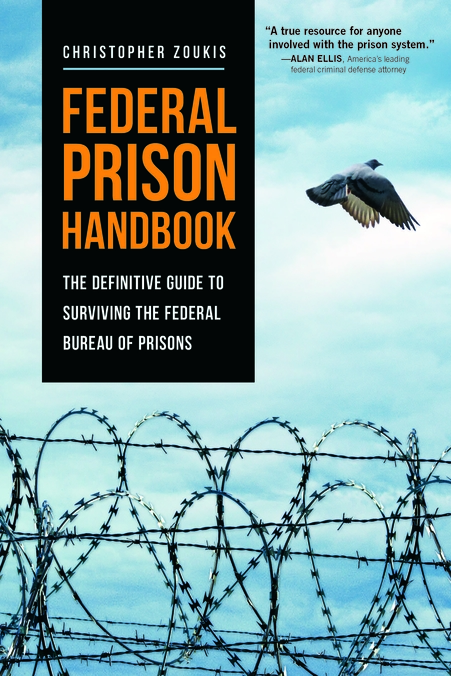JAILHOUSE LAWYERS ARE OFTEN PUNISHED WITH SOLITARY CONFINEMENT
Incarcerated Legal Advisors Help Others Pursue Their Rights. Isolation Is One Way for Prisons and Jails to Block That Vital Work.
Timothy Phillips was in the middle of working on multiple legal cases when jail staff called him away from his cell in Alameda County’s Santa Rita Jail. When he returned hours later, he found all his papers were disorganized and his room assignment had been changed. While frustrating, this experience is something Phillips has come to expect in retaliation for the work he does as a “jailhouse lawyer,” a common term for incarcerated people who represent themselves and provide legal help to others.
Jailhouse lawyers, who are typically self-taught, spend massive amounts of time navigating a complex and unfairly stacked legal system in an attempt to hold the state accountable for crimes committed against themselves and their peers. And in response to this work, Phillips and other jailhouse lawyers around the country routinely face retaliation and punishment — often in the form of transfers and solitary confinement.
Avon Twitty, a former jailhouse lawyer, alleged in a federal lawsuit that his transfer to the highly restricted Communications Management Unit in his federal prison was retaliatory, for both his legal work and his conversion to Islam. And in New York, Derrick Hamilton spent 10 of his 23 years incarcerated in solitary confinement. “It was retaliation for litigating,” Hamilton told Law360 of his time in isolation. “They don’t like people that litigate against them.”
Incarcerated people often turn to jailhouse lawyers due to an overwhelmingly lack of access to outside legal representation. In the 1940s, the Supreme Court established that incarcerated people have constitutional access to the courts. But in reality that access is highly limited, in part due to a lack of legal representation: In recent federal civil rights cases brought by incarcerated people, over 90 percent of plaintiffs have no attorney. Often, their only choice is to figure out how to navigate the legal system and file their own (often handwritten) briefs from their cells, or turn to jailhouse lawyers.
But for jailhouse lawyers, this vital work can be dangerous. They frequently find themselves targeted by jail or prison staff, who see litigation as a threat to their systems of punishment. Jailhouse lawyers are particularly at risk of being sent to solitary confinement, which is used not only as retaliation, but also to effectively separate people from their clients and legal materials. Separation and solitary are used strategically by prison staff to keep people from pursuing their human rights while incarcerated.
Separation and “Investigation”
In Santa Rita Jail, Phillips says he is moved at least once a month — sometimes in routine prison operations, but often to prevent him from continuing cases with clients. “One of the biggest things they do is once they find out that I’m helping somebody, they’ll either try to move me or the other person,’ said Phillips. “Separation is probably the biggest tool that they use. They fabricate things to justify their reasons for separating you, but the real reason is because of the work.”
Recently, Phillips said he was separated from his friend and former cellmate, when staff realized they were working together on his legal issues. Phillips frequently helps this friend, who is autistic, to communicate with his lawyer and write grievances and official internal complaints, usually regarding inadequate disability accommodations in the jail. When Phillips is moved, prison staff often confiscate his written notes about his friend’s concerns, under the justification that people are not supposed to have legal documents belonging to other incarcerated individuals.
When jailhouse lawyers are sent to solitary confinement, they lose access to law libraries and the vital tools required to file a legal case from inside of a cell. “Once you get past the grievance stages, lawsuits, more filing with the courts, it becomes costly — photocopies, stationery items,” explained Phillips. “There’s a lot involved with writing and typing. It’s difficult too, because a lot of guys that need help, they don’t have resources.”
Timothy Phillips was in the middle of working on multiple legal cases when jail staff called him away from his cell in Alameda County’s Santa Rita Jail. When he returned hours later, he found all his papers were disorganized and his room assignment had been changed. While frustrating, this experience is something Phillips has come to expect in retaliation for the work he does as a “jailhouse lawyer,” a common term for incarcerated people who represent themselves and provide legal help to others.
Jailhouse lawyers, who are typically self-taught, spend massive amounts of time navigating a complex and unfairly stacked legal system in an attempt to hold the state accountable for crimes committed against themselves and their peers. And in response to this work, Phillips and other jailhouse lawyers around the country routinely face retaliation and punishment — often in the form of transfers and solitary confinement.
Avon Twitty, a former jailhouse lawyer, alleged in a federal lawsuit that his transfer to the highly restricted Communications Management Unit in his federal prison was retaliatory, for both his legal work and his conversion to Islam. And in New York, Derrick Hamilton spent 10 of his 23 years incarcerated in solitary confinement. “It was retaliation for litigating,” Hamilton told Law360 of his time in isolation. “They don’t like people that litigate against them.”
Incarcerated people often turn to jailhouse lawyers due to an overwhelmingly lack of access to outside legal representation. In the 1940s, the Supreme Court established that incarcerated people have constitutional access to the courts. But in reality that access is highly limited, in part due to a lack of legal representation: In recent federal civil rights cases brought by incarcerated people, over 90 percent of plaintiffs have no attorney. Often, their only choice is to figure out how to navigate the legal system and file their own (often handwritten) briefs from their cells, or turn to jailhouse lawyers.
But for jailhouse lawyers, this vital work can be dangerous. They frequently find themselves targeted by jail or prison staff, who see litigation as a threat to their systems of punishment. Jailhouse lawyers are particularly at risk of being sent to solitary confinement, which is used not only as retaliation, but also to effectively separate people from their clients and legal materials. Separation and solitary are used strategically by prison staff to keep people from pursuing their human rights while incarcerated.
Separation and “Investigation”
In Santa Rita Jail, Phillips says he is moved at least once a month — sometimes in routine prison operations, but often to prevent him from continuing cases with clients. “One of the biggest things they do is once they find out that I’m helping somebody, they’ll either try to move me or the other person,’ said Phillips. “Separation is probably the biggest tool that they use. They fabricate things to justify their reasons for separating you, but the real reason is because of the work.”
Recently, Phillips said he was separated from his friend and former cellmate, when staff realized they were working together on his legal issues. Phillips frequently helps this friend, who is autistic, to communicate with his lawyer and write grievances and official internal complaints, usually regarding inadequate disability accommodations in the jail. When Phillips is moved, prison staff often confiscate his written notes about his friend’s concerns, under the justification that people are not supposed to have legal documents belonging to other incarcerated individuals.
When jailhouse lawyers are sent to solitary confinement, they lose access to law libraries and the vital tools required to file a legal case from inside of a cell. “Once you get past the grievance stages, lawsuits, more filing with the courts, it becomes costly — photocopies, stationery items,” explained Phillips. “There’s a lot involved with writing and typing. It’s difficult too, because a lot of guys that need help, they don’t have resources.”
The specific provision in the PLRA that forces Phillips to file endless grievances before seeking legal action is called the “Exhaustion Requirement.” It essentially requires incarcerated people to “exhaust” all of a prison’s options for reform internally before going to court. But prison officials are the ones who design the grievance systems in the first place, and these systems are often poorly monitored and unnecessarily complex, and include cumbersome requirements. In some states, for example, lawsuits have been thrown out because the original grievances were filed in the wrong colored ink or failed to meet a deadline of two days after the incident. “The sky’s the limit for the procedural complexity or difficulty of the exhaustion regime,” Margo Schlanger, a University of Michigan law professor and expert on the PLRA, noted in an article in the Harvard Law Review.
In response to the exhaustion requirement, Phillips has attempted to learn how to file grievances in ways that might actually shift policy. “I try to familiarize myself with their policies and their rules, and I cite those rules and policies in the grievances, close them in a little bit,” Phillips says.
However, even the most carefully written, heavily cited grievances rarely succeed. “All they’re required to do is to reply to it,” he says. “They’re not required to resolve the grievance or compensate you in some kind of way, although they should. They try to protect each other, to cover for each other.”
The complex grievance requirements create yet another way for prisons and jails to retaliate against jailhouse lawyers. The PLRA literally mandates that incarcerated people exhaust the grievance process before litigating. Yet Phillips was sent to solitary for “complaining too much” — in other words, for being exhausting.
Sending a Message
In a lawsuit filed this past November, jailhouse lawyer Mark Wilson alleges that he was sent to — and currently remains in — solitary confinement in Oregon State Correctional Institution in retaliation for litigating against the prison. The prison’s justification for his isolation was that Wilson was found with “contraband” in the form of a children’s toy telephone. Wilson worked as a legal clerk, and the toy was placed on his desk by the prison library coordinator as a joke. But that joke put him in isolation for 120 days, a punishment that is usually reserved for the most violent assaults. In an interview with The Oregonian, Wilson expressed concern that “other legal assistants are afraid to do the kind of work I was doing now because they’re afraid they’ll face what happened to me.”
The fear of retaliation and the long-term negative consequences of being a jailhouse lawyer haunt Phillips. The ongoing forced relocations and stints in solitary give him little hope for his own chances of parole and eventual release. “It doesn’t look good for us to be put in [solitary] like that,” he said. “You get reviewed every six months, and they look to see if anything has happened to you, and if it has, it hurts your chances of reentry, getting moved to a halfway house.”
But Phillips fights on. Despite the bureaucratic nightmare of being a jailhouse lawyer, and regardless of the retaliation he has faced for it, he has no plans to stop. “Filing sends a message,” he says. “We’re not going to just sit. We’re going to go to your superiors.”







